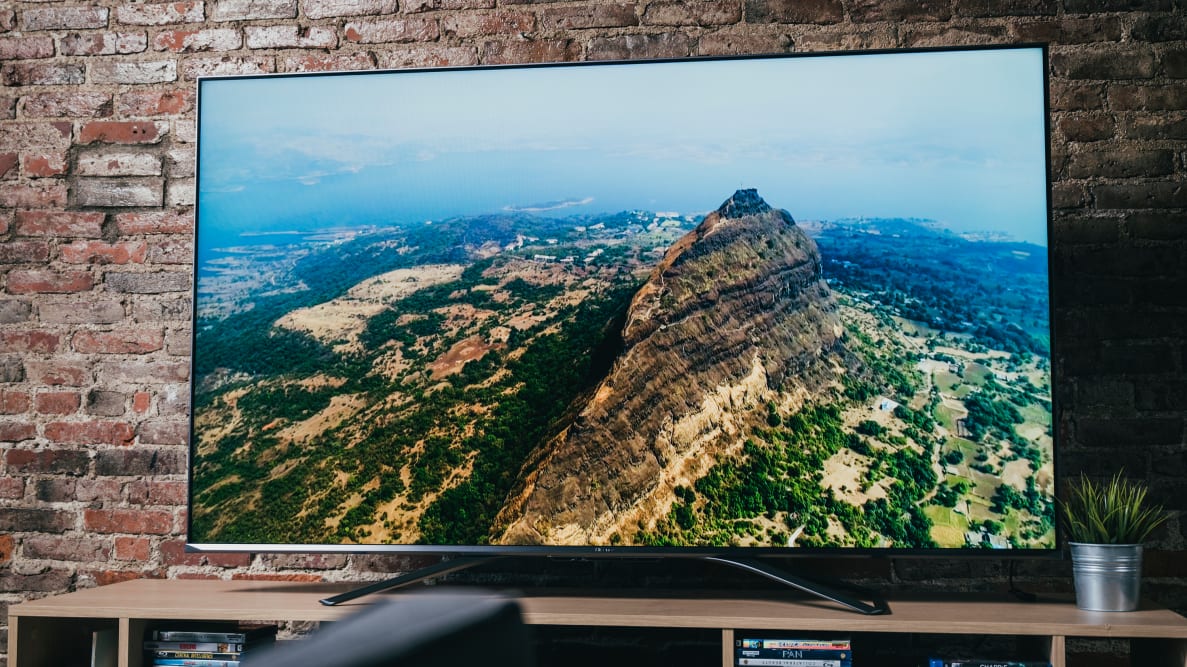Pros
-
Incredible brightness
-
Great color production
-
Value-forward price
Cons
-
Lacks VRR, ALLM, and eARC support
The H9G is an upper-mid-range TV that offers terrific picture quality but leaves off the cutting-edge features touted by some of the best TVs we've seen this year from TCL and Vizio. This quantum dot equipped model delivers an exceptionally bright picture with superb color, but if you're hoping for future-proof features that will keep it ahead of the curve for years to come, you might want to look elsewhere. In other words, the H9G is a great TV if what you're after is a terrific, bright picture, but a less-than-ideal pick if you're a gamer (or if you just want to lock down some exciting future-proofing features).
Editor's note: Due to COVID-19 complications, this review leans heavily on test results in lieu of hands-on time with the TV.
About the Hisense H9G
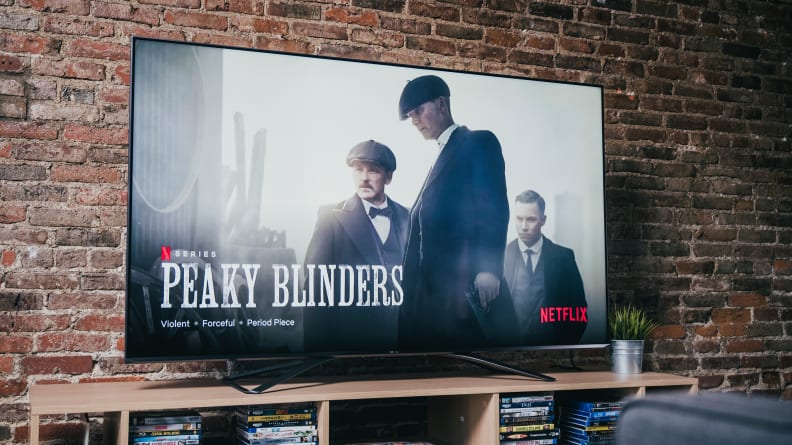
The Hisense H9G is available in 55- and 65-inch variants.
There are two sizes in the Hisense H9G series: a 55-inch model and a 65-inch model. We received our review unit as a loan from Hisense, but all of our readings were taken with the H9G in its factory default settings.
Here's the pricing of the H9G's two sizes:
- 55-inch (Hisense 55H9G), MSRP $749.99
- 65-inch (Hisense 65H9G), MSRP $999.99
Different sizes of TVs in a series tend to perform very similarly to one another, so we don't expect there to be major differences between the 55- and 65-inch versions of the Hisense H9G. Here are some of the key features shared by both:
- Resolution: 4K (3,840 x 2,160)
- Display type: VA LED panel with quantum dots
- Local dimming: Full-array local dimming
- HDR support: HDR10, HDR10+, HLG, Dolby Vision
- Dolby Atmos: Yes
- eARC support: No
- Native refresh rate: 120 Hz
- Smart platform: Yes (Android TV)
- Color: DCI-P3/10-bit color space
- Processor: Hi-View chipset
- Other features: Google Assistant and Alexa integration
In addition to Google Assistant and Alexa support, the H9G features an Android-based smart platform. It's not our favorite smart platform on the market today (that honor goes to Roku), but it's flexible and supports a ton of apps.
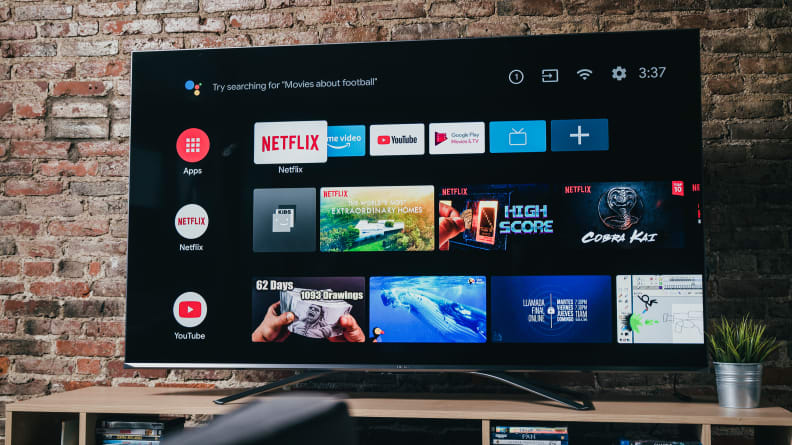
The Hisense H9G comes equipped with an Android-based smart platform right out of the box.
Performance Data
Before testing each TV, we make sure the panel is on and receiving a continuous signal for at least 24 hours, allowing the pixels plenty of time to warm up. Our 65-inch H9G received the standard warm-up time before any readings were taken.
For SDR tests, we used the H9G's "Theater Day" picture setting. For HDR tests, we used the TV's "HDR Theater" picture setting. We’ve chosen these settings because of their accuracy, but results may vary across picture modes.
We use a standard ANSI checkerboard pattern for most of our basic contrast tests—including the ones reported below—but we also use white and black windows ranging from 2% to 90% to test how well the contrast holds up while displaying varying degrees of brightness.
I'll expand on our test results throughout the review, but for now, here are some key takeaways:
• HDR contrast (black level/brightness): 722.4 nits/0.071 nits (ANSI checkerboard) • SDR contrast (black level/brightness): 654.6 nits/0.069 nits (ANSI checkerboard) • HDR peak brightness: 1,667 nits (50% white window) • HDR color gamut coverage: 96% (DCI-P3/10-bit) • SDR color gamut coverage: 99% (Rec.709)
Connectivity
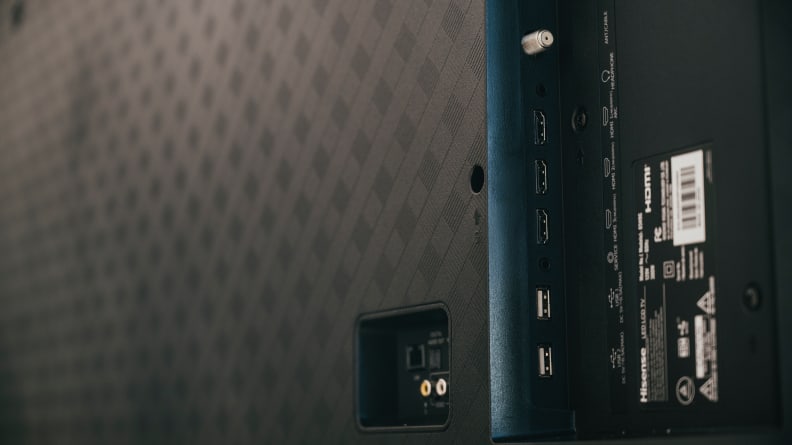
There are four HDMI 2.0 ports but no eARC or HDMI 2.1 support.
The H9G offers a basic suite of inputs that will get the job done in most cases, but those shopping for the sought-after updates like HDMI 2.1 or eARC will be disappointed to learn that these features are absent. I'll go into detail about those features soon, but for now, here's what you'll find on the back of the H9G's panel:
• 4x HDMI 2.0 ports • 2x USB 2.0 ports • Component input • LAN ethernet port, RF input, optical audio output, 3.5mm audio output
What We Like
Fantastic contrast and overall brightness
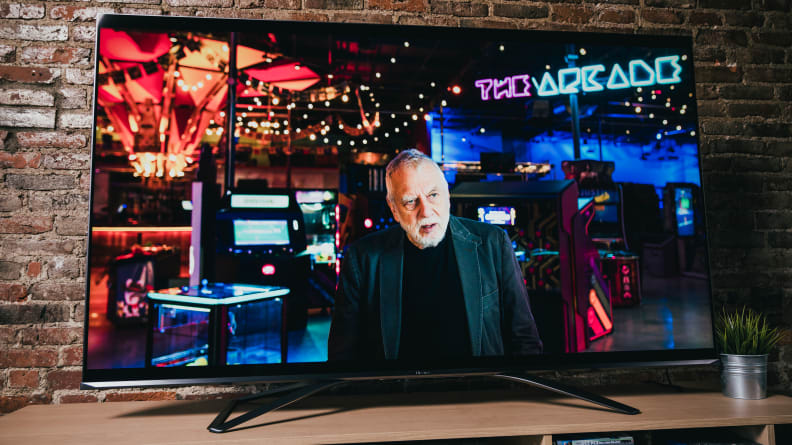
The Hisense H9G blends fantastic brightness with dependably dark black levels.
There's a lot to appreciate about the Hisense H9G, but its most impressive quality is its contrast. Because it's a quantum dot LED TV, the H9G is capable of getting stupendously bright. In our lab tests, the H9G routinely surpassed the 600-nit mark while receiving a standard SDR signal and rose as high as 1,600 nits while receiving an HDR signal. These tests are designed to push a TV to its limits in order to get a sense of its performance ceiling, but even so, you can expect top-of-the-line brightness from the H9G regardless of what you're watching. HDR content in particular is a joy to behold, and anyone who's looking for a bright TV to overcome the ambient lighting of their living room ought to have the H9G on their radar.
The H9G pairs its impressive light output with deep, finely-tuned black levels that are rarely affected by light bloom. At its darkest—that is, when the picture was about 90% black—we clocked the H9G at 0.009 nits. The black levels rise as brighter picture elements are introduced, but shadow details on the H9G don't appear washed out or gray. For such a bright TV, the H9G's ability to regulate its contrast is quite commendable.
Great color production
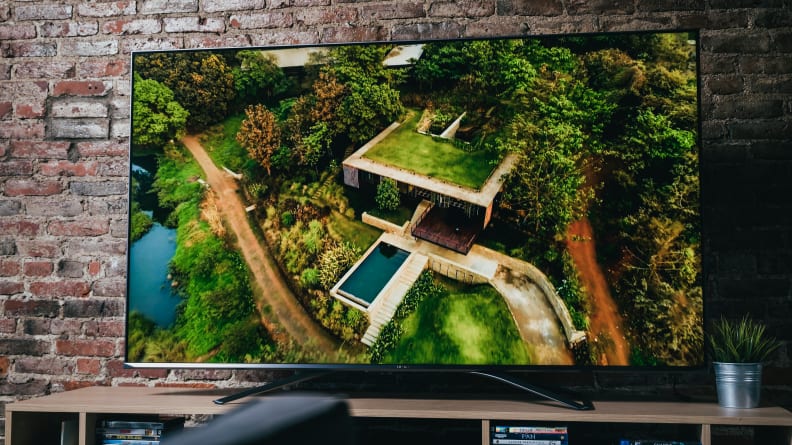
The H9G's color production—particularly in HDR—is terrific.
In addition to a boost in brightness, another bonus of shelling out for a quantum dot TV is that their colors tend to outclass standard LED/LCD TVs by a considerable margin. The H9G is no different, offering a rich, super-saturated palette—particularly in HDR. The H9 covers a respectable 96% of the expanded DCI-P3 color space and a full 99% of the Rec.709 SDR standard. This is right in line with what we expect from an HDR TV with quantum dots, and given the H9's sensational brightness, you're likely to notice the full breadth of its color chops during bright scenes.
The H9G's superb out-of-the-box color production—combined with its impressive contrast—make for a fantastic picture that will look good for several years. There are some missing features to account for (more on that in a bit), but in terms of sheer picture quality, the H9G is a stunner.
What We Don't Like
Lacks the future-proofing features of its competitors
While the H9G is nothing short of fantastic when it comes to delivering a high-quality picture, the TV's lack of the latest connectivity and gaming features is particularly glaring when compared to the TVs that make up its direct competition, like the Vizio OLED and the TCL 6-Series.
Gamers will probably be disappointed to learn that the H9G lacks Variable Refresh Rate (VRR), an enhancement that prevents screen tearing and artifacting during high-framerate gaming. Additionally, while most TVs in this price range are equipped with Auto Low Latency Mode (software that automatically detects when a gaming console input is selected and switches the TV into a low-latency gaming mode) the Hisense H9G does not.
And then there's the fact that the H9G doesn't offer any ports that support eARC passthrough, which will complicate matters for folks who are looking to pass higher-quality audio via HDMI to higher end soundbars, such as Sonos' Arc Dolby Atmos soundbar. Frankly, it's surprising to see a midrange 2020 TV that doesn't offer this feature. The TV's HDMI 1 port offers ARC support, but the higher-bandwidth convenience of eARC is nowhere to be found.
The native refresh rate may not be authentic
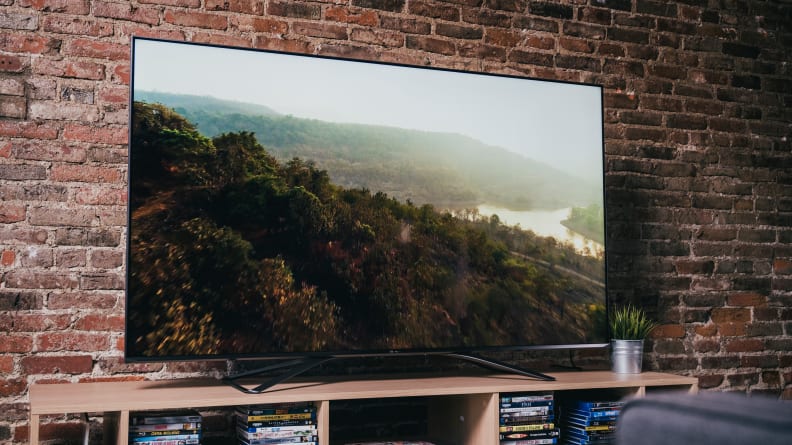
There's been some confusion surrounding the H9G's refresh rate.
This quibble is a bit in the weeds and conjectural, but it's definitely worth pointing out for particular kinds of buyers—namely, gamers and cinephiles who might be hunting for a great TV for 24 FPS Blu-ray playback.
While this discrepancy wasn't obvious in our lab tests, it's been widely reported that the Hisense H9G cannot receive a direct, 120 Hz signal (such as from a gaming PC or newer console), despite being able to technically play 120 Hz content via "black-frame insertion." This is a process used to approximate doubling each frame in a 60 frame sample, making for—you guessed it—120 frames per second.
While the general opinion is that for a lot of 120 Hz content (1080p @ 120 Hz, 1440p @ 120 Hz), the visual fidelity is not compromised, there has been concern that the H9G's pricing is in line with what one would usually pay for a panel with a native refresh rate of 120 Hz, without actually offering a native 120 Hz panel.
If this sounds like a bunch of jargon to you, it probably isn't worth worrying about—especially since we can't confirm it at this time. That said, any buyers specifically looking for a native 120 Hz TV might want to consider researching this discrepancy before they pull the trigger.
Peculiar design might not be everyone's cup of tea
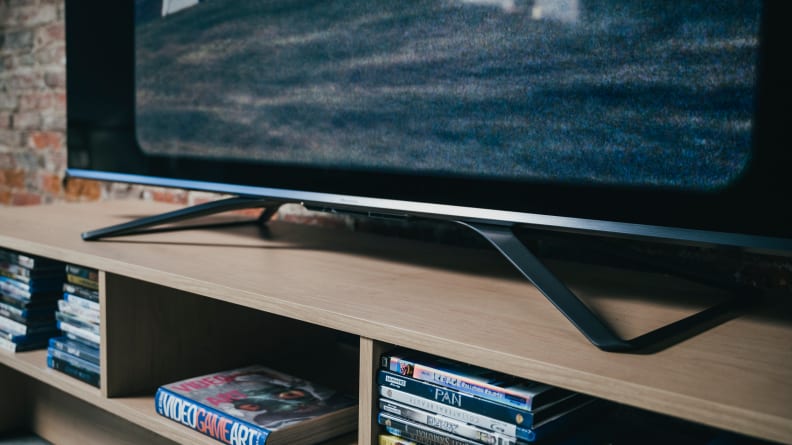
The H9G's butterfly-shaped stand is interesting but not be for everyone.
I commend the Hisense design team on taking a different approach with the H9G's design—its butterfly-shaped stand is quirky and interesting, after all—but some folks might find it to be too busy aesthetically and a bit fussy if you're hoping to save some real estate below your TV.
The best thing I can say about the H9G's overall design is that it's sturdy—the panel doesn't wobble and the materials have a premium feel. That said, even though the stand's design is a refreshing departure from the boomerang-shaped feet we've come to expect from most contemporary TVs, its footprint is pretty big, so it might crowd the surface of whatever table or stand the TV occupies. The panel's bottom bezel is wider than most, too, in part because it accommodates a power button and indicator light.
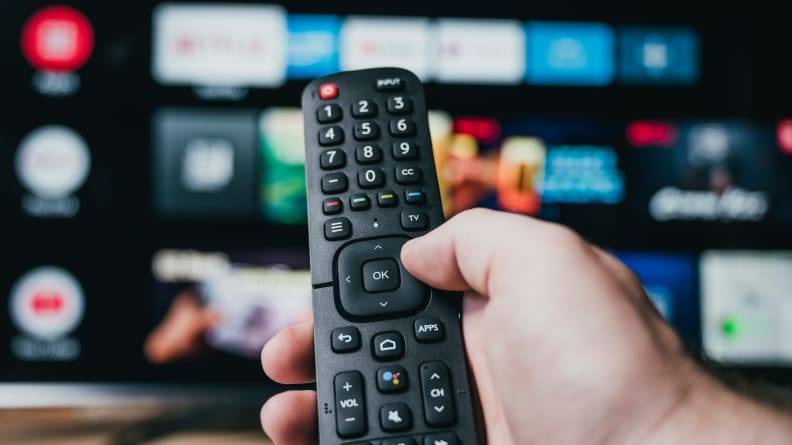
The H9G's remote control is pretty chunky.
Should You Buy It?
If all you want is a bright TV with a great picture, yes
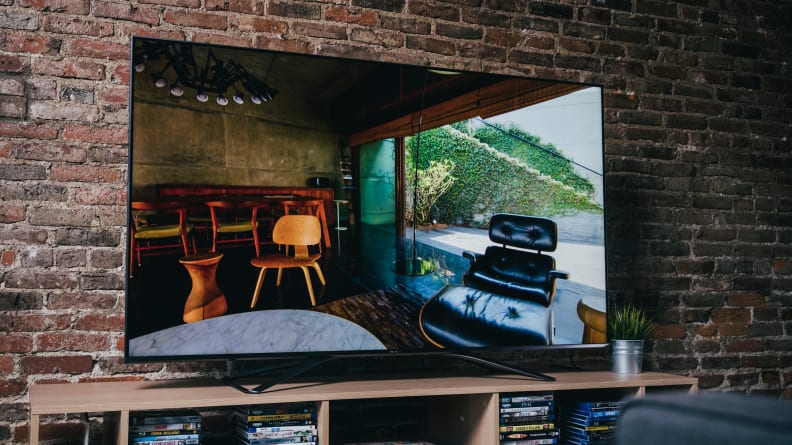
The Hisense H9G is a great TV if what you're after is terrific performance and a bright picture.
The Hisense H9G is an affordable way to secure a quantum dot TV with terrific picture performance, and it's an especially good fit for folks who want a ridiculously bright TV. That said, if you're planning on investing in a next-generation gaming console like the PlayStation 5 or the Xbox Series X and you want a TV that will pair well with these systems, you might want to consider a TV that will support some of these consoles' features.
If that sounds like you, there are a few directions you can go in. You can spend a a little less on a TV like the TCL 6-Series, which doesn't get as bright as the H9G but does support features like Variable Refresh Rate and Auto Low Latency Mode. Alternatively, you could spend more on a TV like the Vizio OLED, which has all of these next-generation features in tow, but whose peak brightness is significantly lower than the H9G. The Vizio OLED has an all-around better picture than the H9G, but costs more and doesn't offer the blistering brightness of Hisense's flagship.
The H9G is a great TV in many respects, but its lack of features means the people who'll get the most out of it are the folks who value brightness above all else.
Meet the testers
Michael Desjardin graduated from Emerson College after having studied media production and screenwriting. He specializes in tech for Reviewed, but also loves film criticism, weird ambient music, cooking, and food in general.
Lee was Reviewed's point person for most television and home theater products from 2012 until early 2022. Lee received Level II certification in TV calibration from the Imaging Science Foundation in 2013. As Editor of the Home Theater vertical, Lee oversaw reviews of TVs, monitors, soundbars, and Bluetooth speakers. He also reviewed headphones, and has a background in music performance.
Julia is the Senior Scientist at Reviewed, which means that she oversees (and continually updates) the testing of products in Reviewed's core categories such as televisions, washing machines, refrigerators, and more. She also determines the testing methods and standards for Reviewed's "The Best Right Now" articles.
Checking our work.
Our team is here to help you buy the best stuff and love what you own. Our writers, editors, and experts obsess over the products we cover to make sure you're confident and satisfied. Have a different opinion about something we recommend? Email us and we'll compare notes.
Shoot us an email